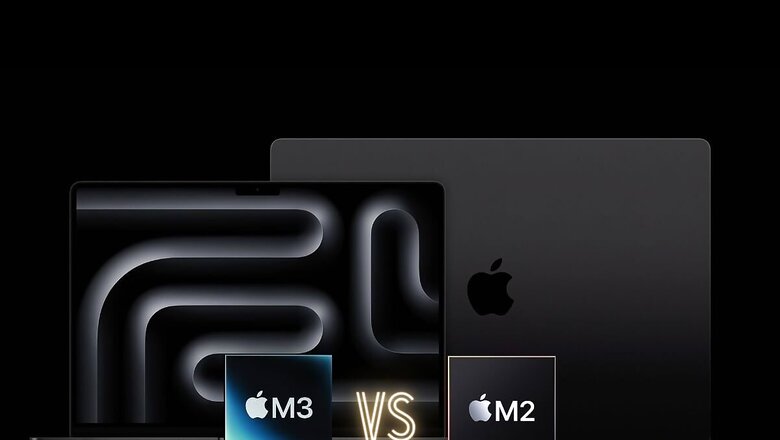
views
Apple announced its new M3-powered Mac lineup on Tuesday, which features the new 24-inch iMac, and the new MacBook Pro in 14 and 16-inch variants, powered by the M3, M3 Pro, and the M3 Max chipsets.
Little has changed in terms of design, aesthetics, and the overall product, apart from the new performance gains delivered by the 3nm-based M3 chipset lineup. However, the new MacBooks from Apple incorporate multiple subtle changes that add up. Let’s get into the differences with the M3-powered MacBook Pro 14-inch and 16-inch compared to the older M2 and M1 generation.
To start, Apple has introduced a big change when it comes to the MacBook Pro 14-inch . Now, it’s possible to purchase it with the baseline chipset—the M3 (10 core GPU). Previously, the high-end MacBook Pro 14-inch was available only with either the M2 Pro or the M2 Max, starting at Rs 1,99,900. Now, the M3-powered MacBook Pro 14-inch costs Rs 1,69,900—reducing the entry price by Rs 30,000. This could cater to those seeking the high-end MacBook Pro for its ProMotion display, speakers, and other features, without necessarily requiring the ‘Pro’ performance of the M3 Pro or the M3 Max. It’s important to note that the base model comes with 8GB of RAM and only two Thunderbolt ports, so this aspect should be considered.
Another significant change is evident in the ProMotion displays of the new laptops. Reportedly, they now feature a panel that reaches a maximum of 600 nits for SDR content, making it 20% brighter than the previous panels. For HDR content, the peak brightness remains at 1600 nits. Apple labels the MacBook Pro displays as the “world’s best display,” still equipped with the 120Hz ProMotion technology.
Regarding design and aesthetics, not much has changed. It retains the same chassis and form factor, but Apple has introduced a new ‘Space Black’ finish with the new 14 and 16-inch MacBook Pro. Apple claims to have resolved the fingerprint issue with dark-colored laptops through what they call a “breakthrough chemistry that forms an anodization seal to greatly reduce fingerprints.” However, this finish is exclusively available with the M3 Pro and M3 Max configured MacBooks. Therefore, if you prefer the MacBook Pro 14-inch with the M3 chipset, you’re limited to the classic Space Grey or Silver.
Regarding performance, Apple isn’t comparing the new models to the M2 series but rather with the M1 Macs for obvious reasons. According to Apple, the MacBook Pro 16-inch with the M3 Max is up to 2.5x faster than the 16-inch MacBook Pro with M1 Max, while the 14-inch MacBook Pro with M3 is up to 60 percent faster than the 13-inch MacBook Pro with M1.
Apple also notes that in applications like Photoshop and DaVinci Resolve, the performance is significantly improved. Another notable change lies in the gaming performance of these devices; now that the M3 lineup supports features like ray-tracing, users can expect better performance moving forward.














Comments
0 comment